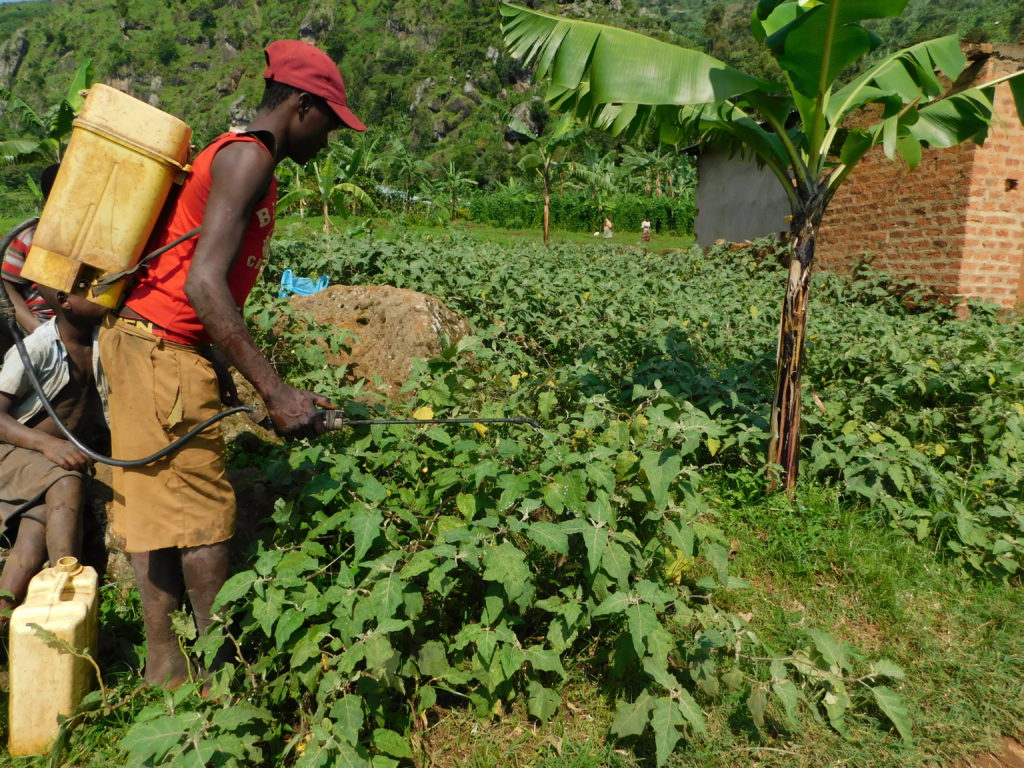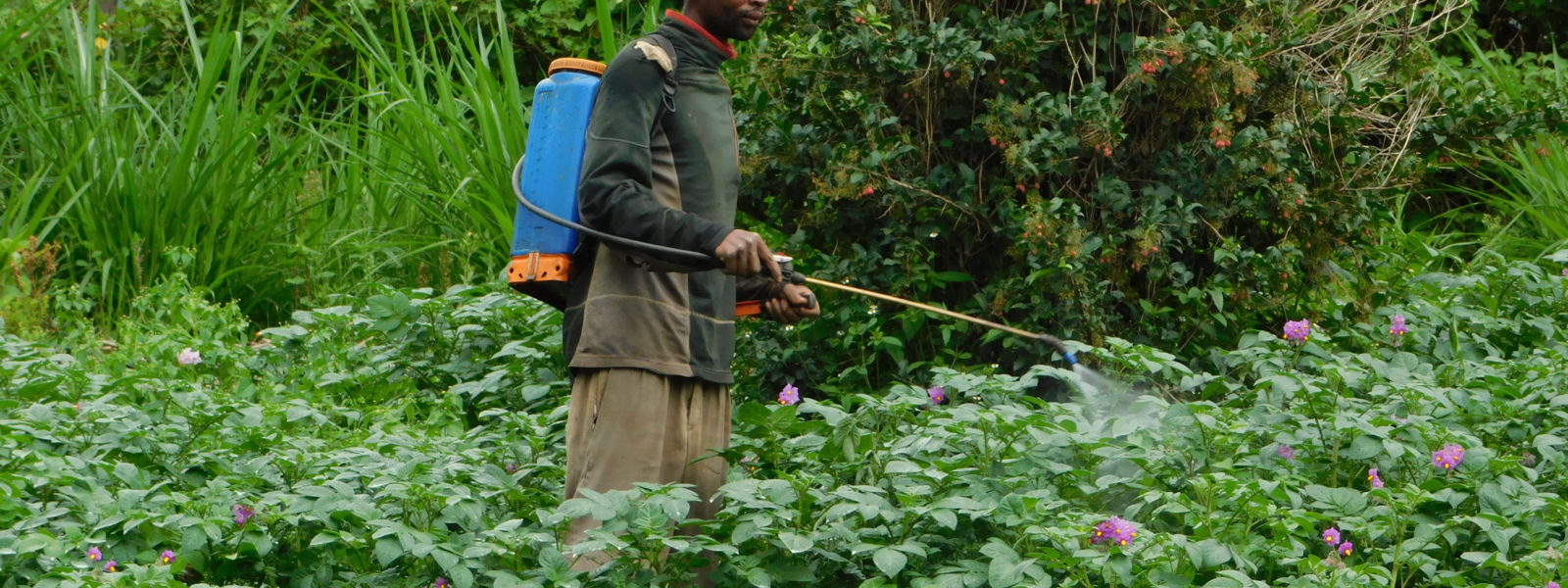It’s hard to overstate the importance of root, tuber, and banana (RTB crops) for smallholder farmers in the Great Lakes region of Central Africa. Thousands of farming households here depend on orange-fleshed sweetpotato, yellow cassava, east African cooking banana and table potato for their daily meals. These families also rely on the cash generated from the sale of surplus RTB crops to cover home expenses, often including school fees and medical care.
Despite the prominent role RTB crops play in the livelihoods of farmers in the region, their production is constrained by numerous pests and diseases that can hamper yields and cause significant postharvest losses. The African sweetpotato weevil and diseases such as potato late blight, cassava mosaic disease, and banana Xanthomonas wilt place high pressure on crop health and yields and are spreading to new areas with changing climatic condition.
“Quantifying crop losses from pests and diseases with high accuracy is difficult,” explains Joshua Okonya, Research Associate – Crop Protection, at the International Potato Center (CIP). “Official statistics don’t exist, and farmers rarely keep records.” Okonya estimates that losses would be in the average range of 10-30% depending on crop type, pathogen, weather conditions, and crop management. Crop losses significantly affect smallholder farmers’ livelihoods and food security.
In a bid to control these threats, farmers in Rwanda and Burundi are increasingly using pesticides to reduce yield- and postharvest losses. Yet information on pesticide use practices in RTB crops in these two countries is lacking, and there are few studies on farmers’ use of personal protective equipment (PPE), exposure symptoms, handling, and pesticide misuse.
Knowledge gaps in safe pesticide handling, the importance of PPE and a lack of working application equipment and safe storage pose significant hazards to farmers and their families. Neither Rwanda nor Burundi had or enforced regulations on safe pesticide use and handling, essentially leaving it to commercial sellers—many of them untrained—to advise farmers on how to store, package, label, transport, and handle these hazardous and often unlabeled chemicals.
“If nothing is done, cases of pesticide poisoning will continue to rise leading to ill-health among those who apply pesticides, hence reducing productivity and increasing expenditure on medical care,” says Okonya, a co-author of the paper published in 2019 in the International Journal of Environmental Research and Public Health. However before potential interventions can be designed, a clearer picture is needed to capture farmers’ knowledge, attitudes, and practices about the role of pesticides in managing RTB pests and diseases.

A farmer shows the enumerator a fungicide she bought and keeps in an un-labeled plastic bag. Photo credit Joshua Okonya, CIP
What the survey revealed
In 2014 a team of researchers from the International Potato Center (CIP), the International Institute of Tropical Agriculture (IITA), Bioversity International, the Rwanda Agricultural Board, and the Institut des Sciences Agronomique du Burundi surveyed 811 RTB crop farming households in two watersheds, Ruhengeri in Rwanda and Rusizi in Burundi.
The survey gathered data on existing pest and disease control methods, toxicity levels of pesticides and frequency of application, protective measures against exposure, cases of acute poisoning while handling pesticides and descriptions of farmers’ level of knowledge regarding pesticide handling and use of PPE.
Results of the household survey paint a detailed picture of how farmers are managing the main pests and diseases of each of their RTB crops through the use of pesticides, cultural control methods such as single stem removal, crop rotation, and early harvesting, or a combination of different practices.
More than half of surveyed farmers applied pesticides with damaged knapsack sprayers, meanwhile use of PPE such as eye protection, face, and nose masks, gloves, and waterproof jackets were low. Farmers typically wore face-covering such as handkerchiefs, which provide poor protection. Farmers were reluctant to use PPEs while applying pesticides, citing cost and lack of availability as barriers.
As a result, all surveyed farmers reported some type of symptoms (e.g. itchy skin, irritated eyes, headaches, and nausea) following field application of pesticides, and in both countries, they knew of cases where some farmers have died from accidental poisoning.
Where future efforts should go from here
The household survey offers insights and information that can be used when designing vector control programs, intervention programs, and integrated pest management (IPM) approaches, including the safe use and handling of pesticides.
The results can be of great value to other stakeholders in the pesticides value chain and can feed into efforts to raise awareness of the need to enforce pesticide legislation and alternative control methods.
Given the high risk of pesticide poisoning, it’s imperative that farmers and agrochemical retailers of pesticides alike be trained on how to use and handle pesticides safely, and that IPM approaches that are more sustainable and environmentally friendly be prioritized and promoted through increased policy and institutional support.
